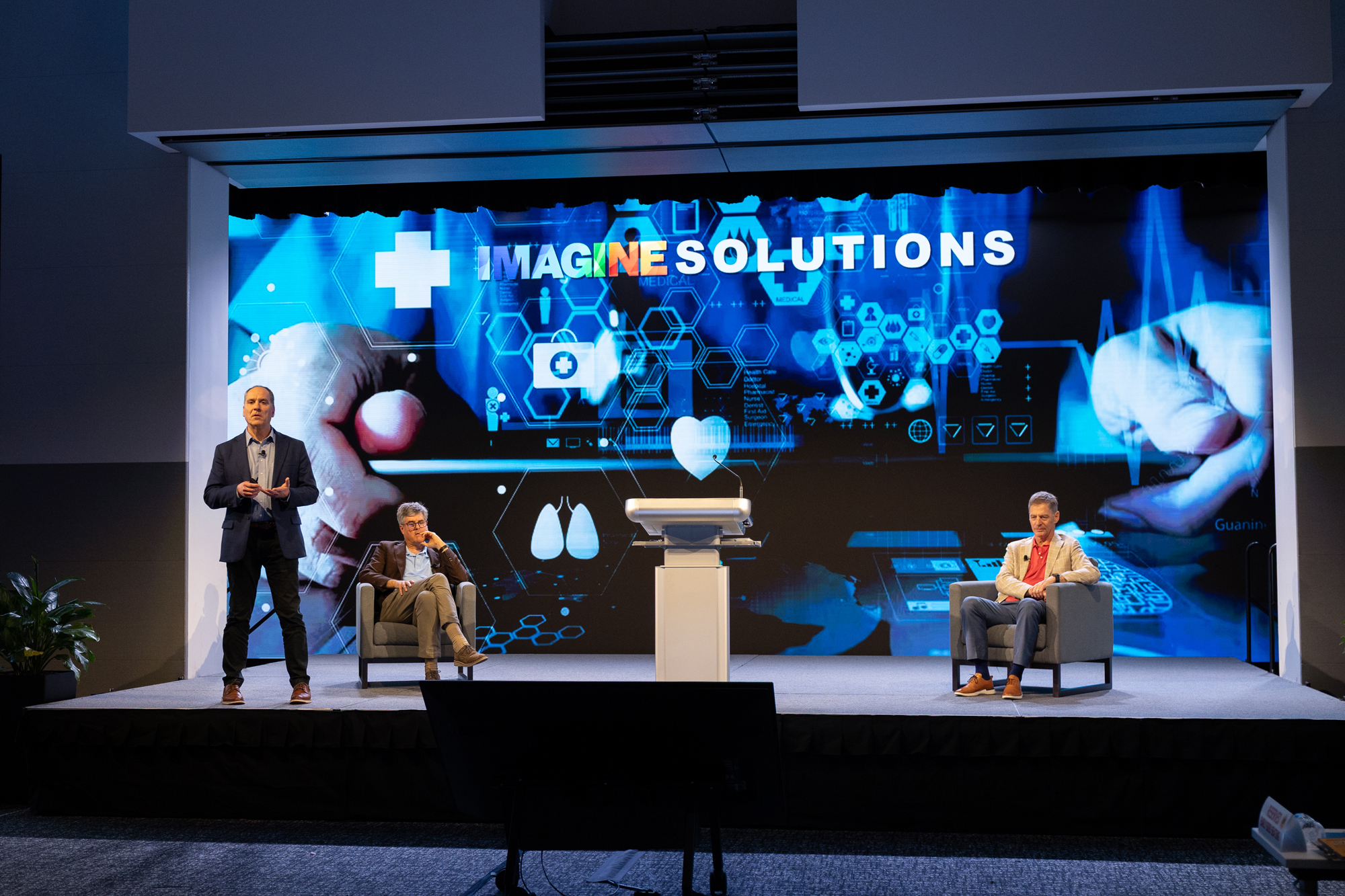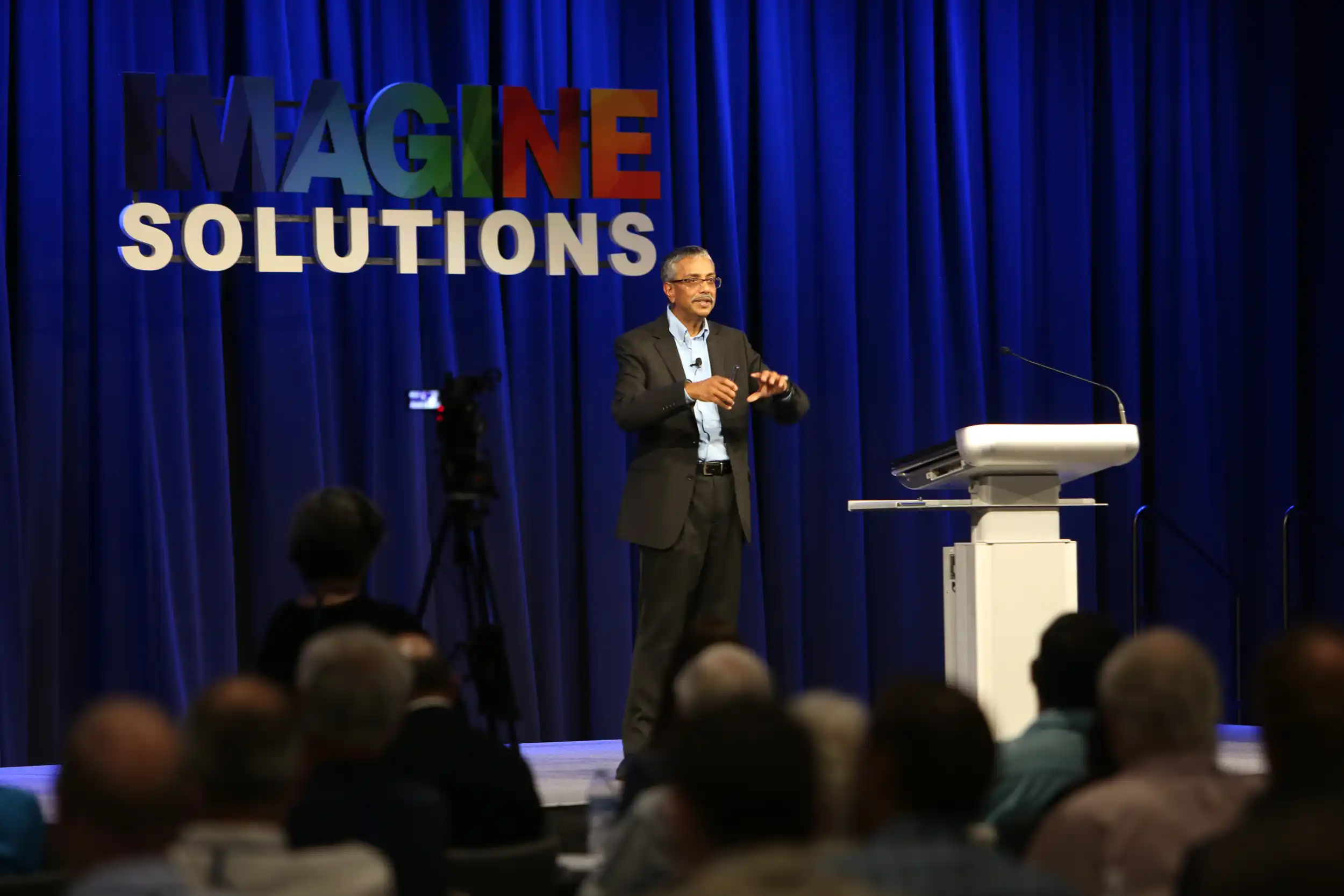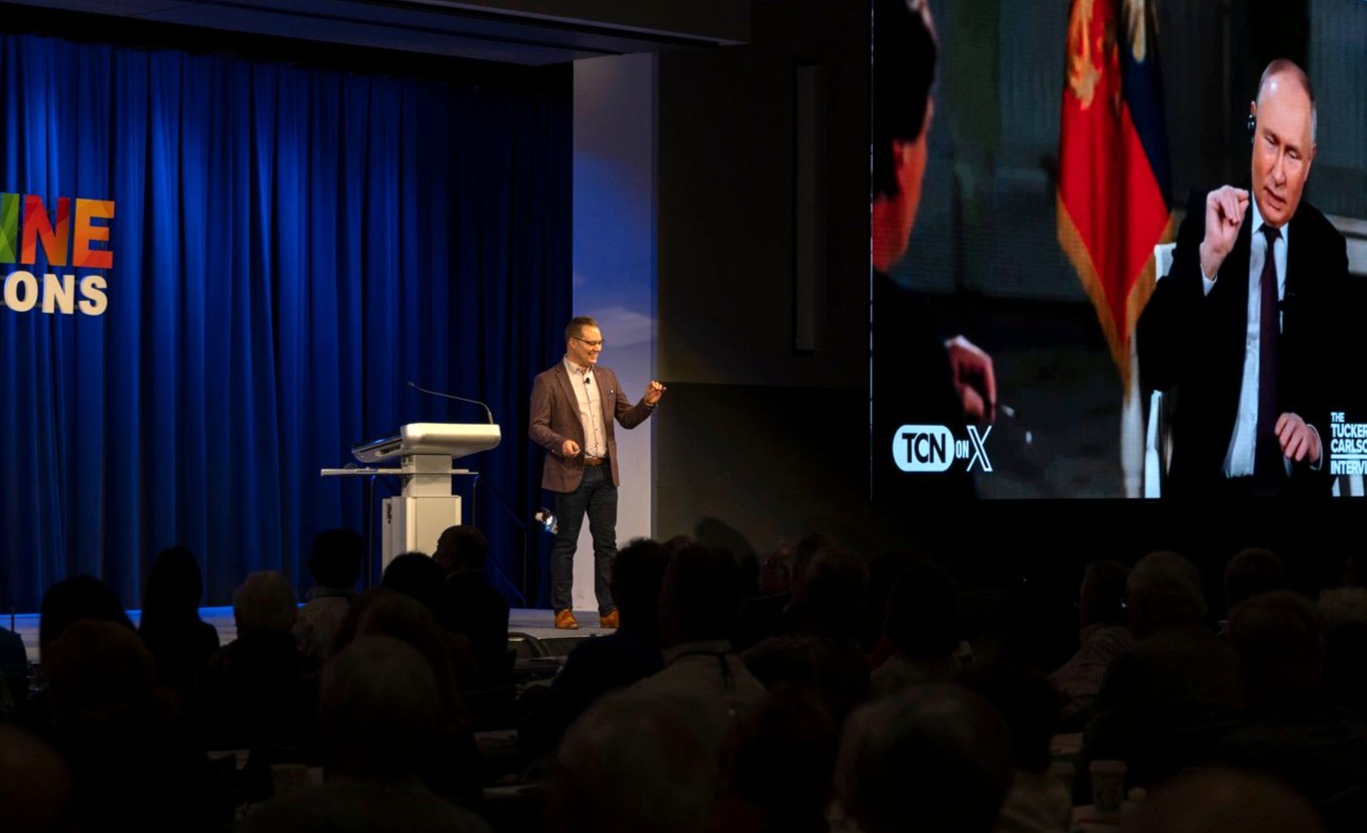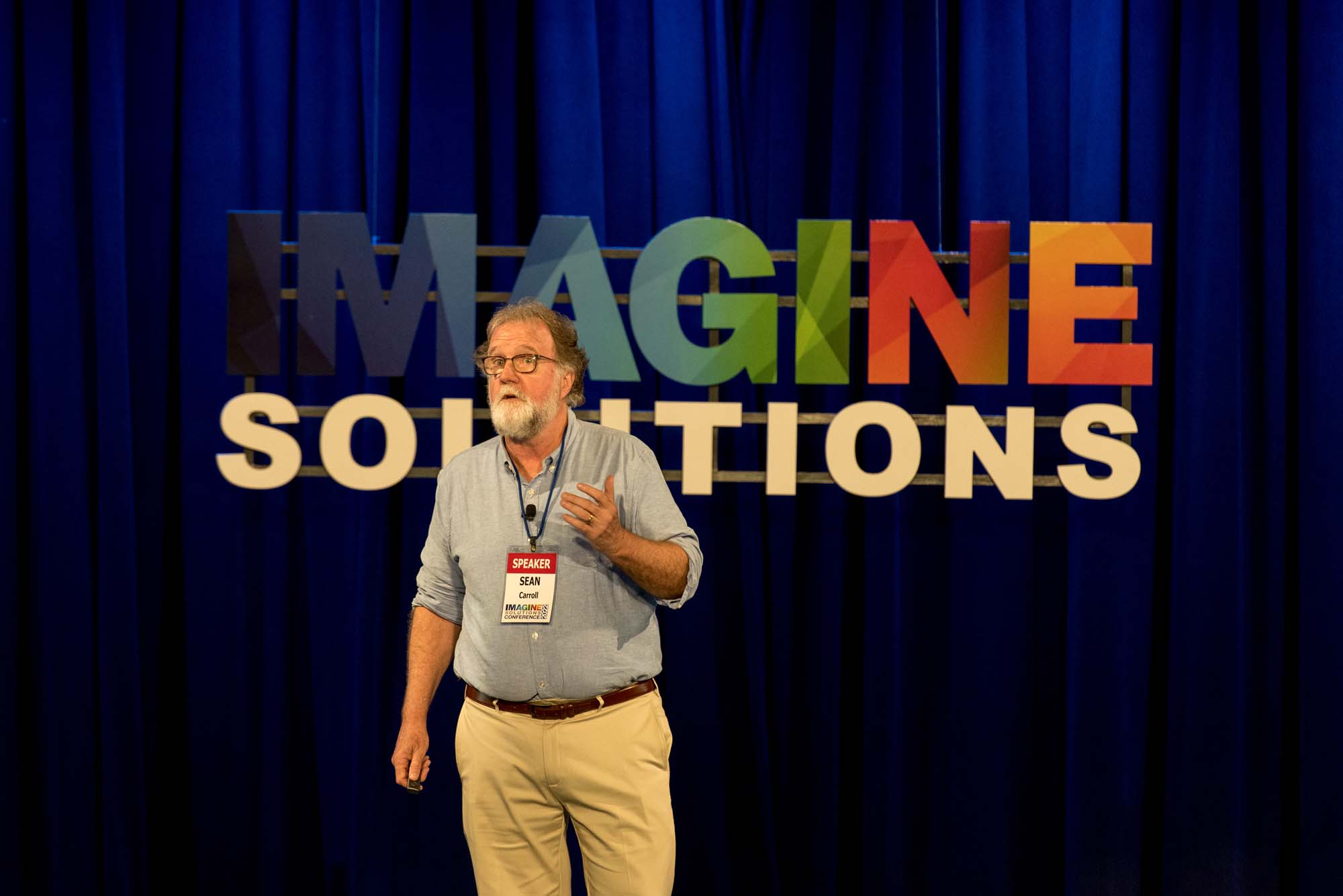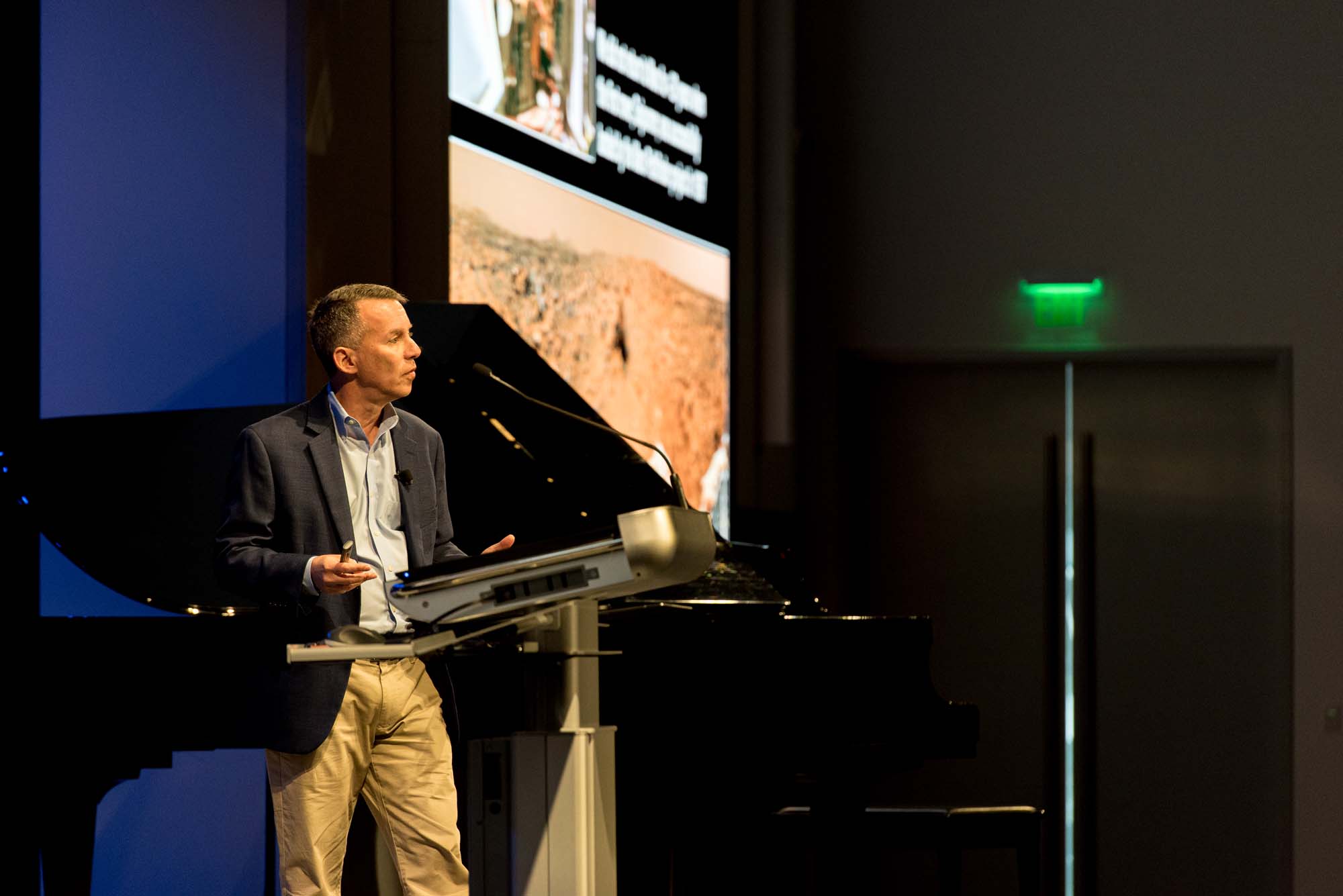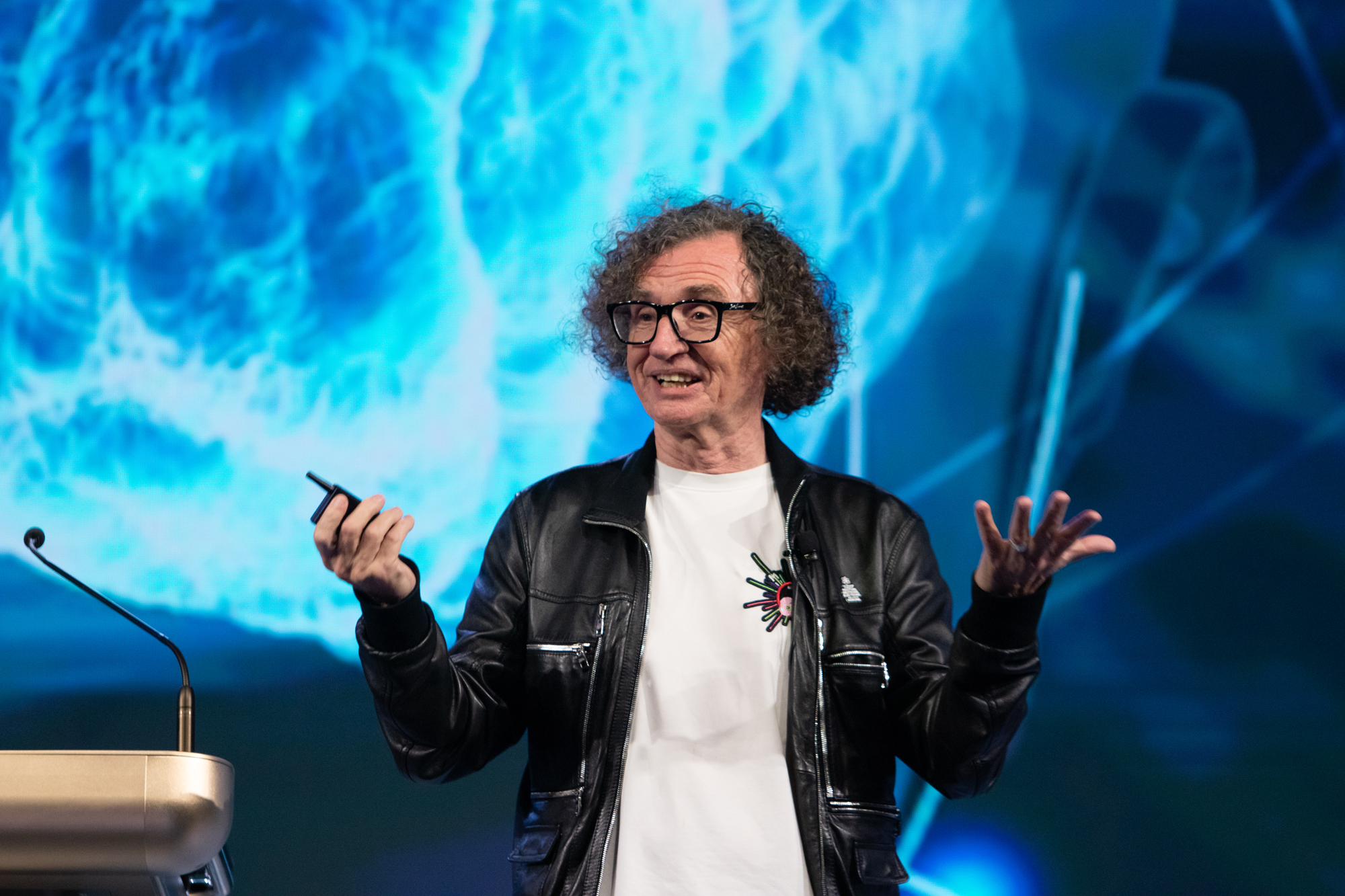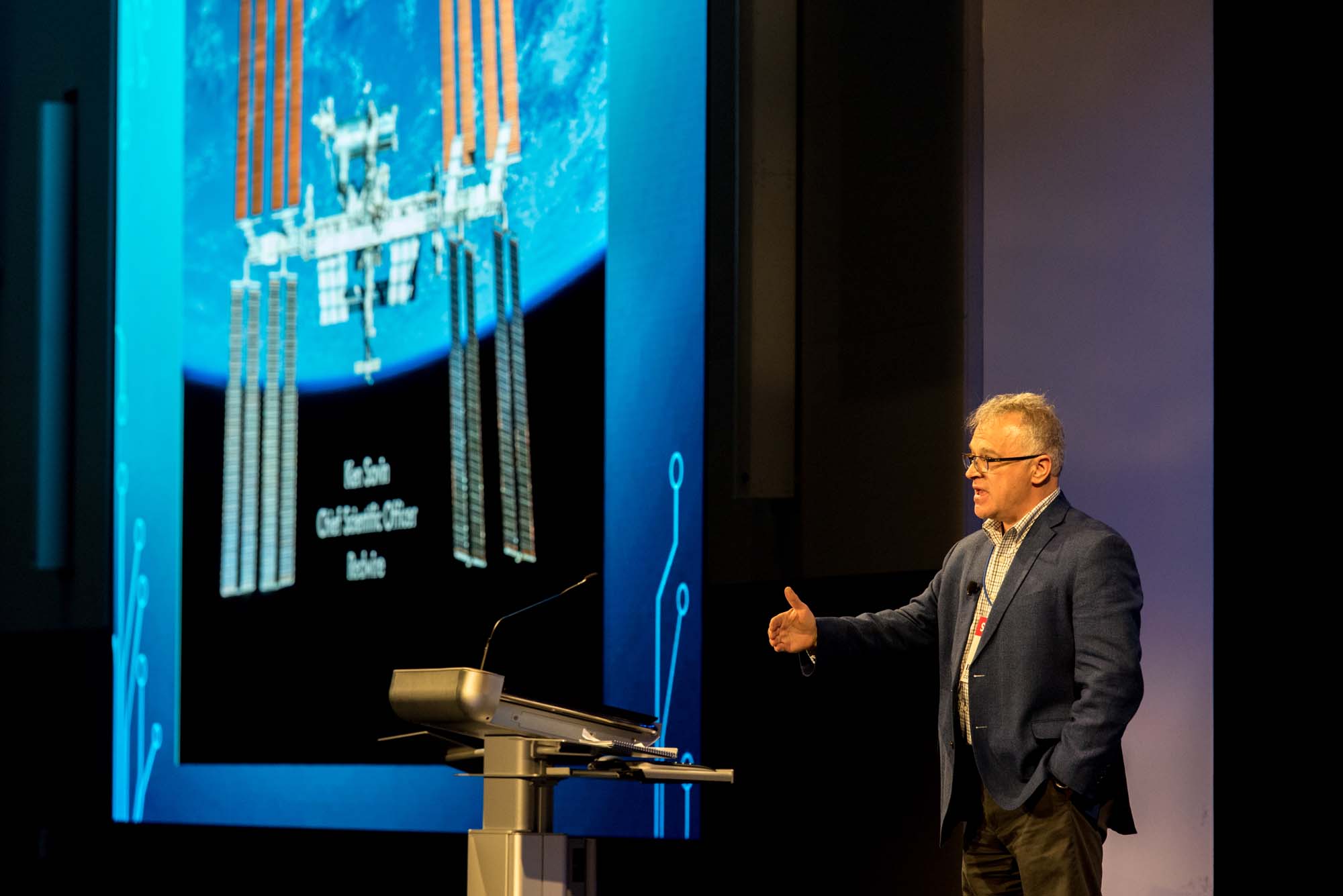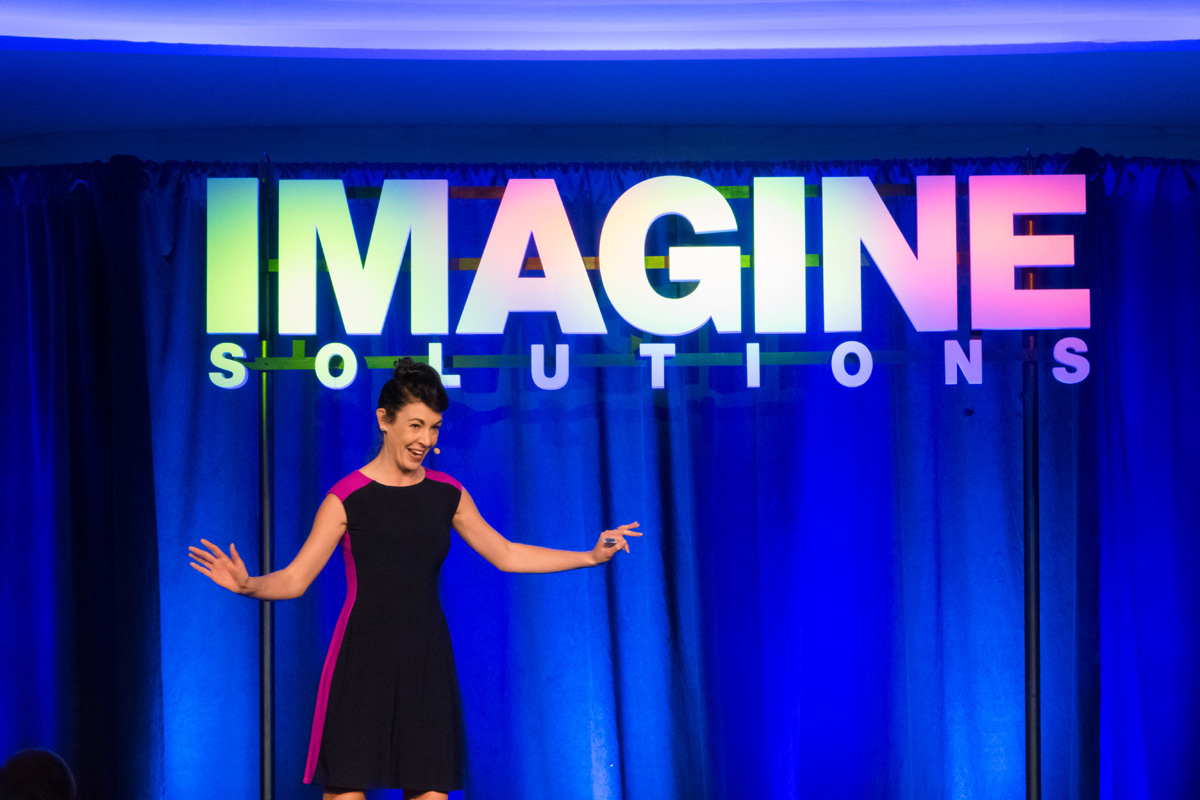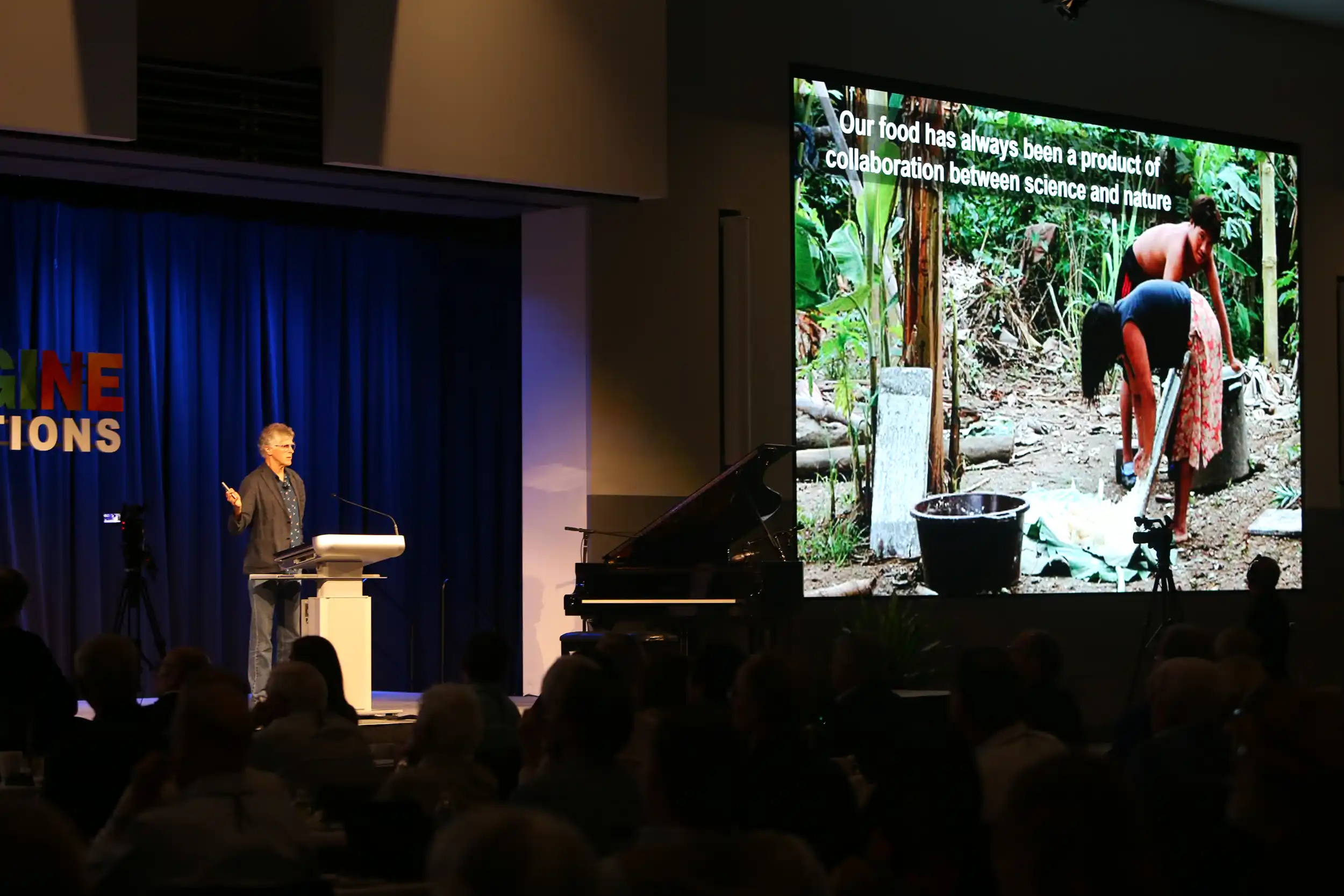Battelle Center for Science and Technology – Panel
Three of the most influential leaders in American science—Lewis Von Thaer (Battelle), John Wagner (Idaho National Lab), and Tom Mason (Los Alamos National Lab)—took the stage to discuss the future of U.S. scientific leadership. From energy innovation to national security and advanced research, these panelists offered a rare insider’s view into how government labs are tackling today’s biggest challenges. Their discussion was eye-opening, emphasizing the power of collaboration, cutting-edge technology, and long-term vision in shaping a safer, smarter, and more sustainable world.
00.11
well most of you I'm wagering as I did not have probably never heard of the Battel Memorial Institute Well simply put it is the backbone of the United States Science Strategy Battel manages nine major science and technology research centers from Los Alamos to Lawrence Liverour to the Oakidge National Lab and more Battel's portfolio includes nuclear science energy national security artificial intelligence and quantum computing Today Lou Vonair is the CEO of Battel He will introduce John Wagner and Tom Mason They run two of Battel's eight science technology centers and they're here to take you behind the scenes of the places where the future is taking shape today Please welcome Lou John and Tom
01.09
Welcome Have fun Thanks for coming Thank you Tyler Quickly we have a quick video and then we'll hop in
02.17
Well good afternoon So most of you probably haven't heard of Battel but we've been around for 96 years We were part of the Manhattan Project We did we'd help with the fuel for the first nuclear submarine We built the first copy machine We sold it to a little company that because of the technology changed their name to Xerox We uh if you go to where we are today we're involved with developing new cancer new ways to deliver cancer medicines that can go directly to a part of the body instead of through the entire body We've developed a technology that can actually destroy these PAS and POS forever chemicals that we're all hearing about And we spun a company out last year to start putting that into the market and it's starting to clean up and destroy those chemicals today But what we're probably most proud of is the work we do for our national laboratories
03.00
particularly our Department of Energy laboratories These are treasures of the country They are something we need to protect and take care of And today we have two of our uh lab directors here Uh Tom Mason who runs Los Alamus National Laboratory And Tom's going to talk about uh one of these topics you're hearing a lot about today artificial intelligence and how we use it at the laboratories uh to advance our science and research And then of course you have to power all these generative AI research centers Um and you need this massive amount of new power So John Wagner who runs our Idaho National Laboratory is one of our nation's nuclear experts and we'll tell you a little bit about how that technology is coming along Tom okay thank you Lou Um okay this is not advancing Doesn't really matter Um so I I was going to talk a little bit about AI You've heard a lot about it in the last talk It's come up a number of times uh but I wanted to really talk about AI for science uh because in the
04.01
end I think that actually may be the uh way that we really see the big impact You know any new technology goes through a kind of cycle where there's a lot of enthusiasm that enthusiasm generates a lot of investments uh in some sense the enthusiasm may be a little bit overblown but that's necessary to generate the investments at the scale you need to enact a transformation um at the end of that there may be some sort of uh you know.com like collapse but the world is different and and that's how we do things in this country whether it's railroads or the.com boom and I think it's fair to say that um a lot of the enthusiasm about AI I we will probably find doesn't quite pan out in terms of economic models But I'm also quite confident that the world is going to be different at the end And I think it's largely because of the possibility
05.02
for artificial intelligence to accelerate the rate of progress Um so what what do I mean by that well if you think about why we're all talking about AI right now it's because of these large language models which sort of burst onto the scene uh two years ago or so Um but it's really not a new thing in the research area We've been doing various forms of artificial intelligence for quite some time Sometimes using different names for it machine learning big data uh and and have been getting pretty excited about the potential and the large language models burst onto the scene because you saw the convergence of a couple different trends what was the scale of data that was available by basically scraping the whole internet Uh the second was the computational power that was embodied in um in GPUs uh as as you know sold by Nvidia primarily Uh the
06.03
third piece was the algorithms uh that underpin uh the sort of thing we do neural networks transformer technology and it it happened that uh most of those algorithms had been around for quite some time People like Jeff Hinton and others had been working on them with actually kind of uninspiring results Um and it was only when the scale of data on the scale of the internet and the machines large enough to crunch it sort of coincided about four years ago or so But you started to see results that were interesting and qualitatively different in the form of these large language models which are basically um you know predictive models of what word should come next given the following input stream And that has generated obviously
07.00
huge amount of excitement and a huge amount of investment based on the promise that there's going to be significant productivity gains in the form of automating of routine tasks And certainly if you think about the ability to have an agent who's going to summarize all your emails or help you write a report um that's kind of interesting But I would argue that it's not really particularly transformational And you know the prior examples that you can point to are in the 70s and 80s there was a lot of discussion in economic circles about something called the productivity paradox And the productivity paradox was in the 70s and 80s companies were investing a lot in computing technology information technology Of course you had the development of the personal computer the PC at the beginning of the 80s And economists were not seeing any gain in
08.00
productivity And this was counter to the sort of economic theory that would say well when you introduce a new technology like the steam engine or the internal combustion engine or electricity you should see productivity gains And that was essentially the model for the industrial revolution But in the 70 and 70s and 80s companies were investing a large amount in computing technology and the real economic growth was actually quite stagnant There were no real productivity gains and this was something of a mystery It was hotly debated and as I said it was called the productivity paradox In the '9s you actually did see some technology- based productivity gains for for most of the decade of the 90s Uh but at the end with the dot crash that ended And for the last 20 years again we've been in a period where there's been relatively little in the way of productivity gains despite the fact that we've seen pretty revolutionary technology in the form of
09.00
things like the smartphones we have and uh you know the the use of of uh the internet and so forth So this mystery of the productivity paradox you know there's differing views on on why it was that we observed this I think the general consensus now is that the productivity the first productivity period uh paradox in the 70s and 80s was essentially a time lag where we started to see the productivity gains in the 90s only because initially when the new technologies was introduced people just kept doing the same stuff they didn't change the way the businesses work So maybe you could use word processors to produce longer documents but it didn't really add much more economic value So there was a period of time where we didn't really cash in on the productivity gains And um the best explanation I've seen for why we haven't seen much productivity gains in the last 20 years despite the int introduction of relatively revolutionary uh changes is
10.01
because yes we got all these smart devices and we can communicate It allows us to do our job faster and we waste all the time staring at our cell phones And um so the productivity gain is kind of a net thing It allows you to do things faster but if you don't use it to do things faster that are economically productive you don't get much benefit And I think a lot of the large language models that we're seeing there's a great risk that that's going to happen going to automate routine tasks But if I use AI to write a much more a much longer report than I would have written before which nobody reads but they use AI to summarize it into a paragraph There's no gain in productivity from that one round you know from that uh that cycle Um so the productivity gains of AI are going to be the net How much of it do we squander
11.01
and how much do we actually cash in in terms of more productive activity it's not to discount it I mean if I get a I run a big bureaucracy so if I get a 10% productivity gain that's great I'll take it Um but my guess is that 10% productivity gain is going to be a 40% improvement in how fast I can do things and a 30% loss in terms of doing things that are useless or not valuable uh or uh uh you know wasting time with more diversions So that's not what I'm really excited about What we're really excited about lo at Los Alamos is using productivity gains for science So we we bought this new machine called Venado We made a deal about four years ago with Nvidia to get it It's good thing we did because we couldn't afford it now And uh it's not on the scale of the hyperscalers that you heard about but it's large enough to do a billion parameter model on a scientific problem And one example of this is
12.02
predicting material fractures So fracture is something that in a particular material in a certain set of parameters we can we understand pretty well right now We can study it and measure it and we can model it but there's not a good generalized description of how fracture works and developing a new material is a 40-year exercise typically And these are high consequence applications we're talking about You know in case you don't know Los Alamos makes nuclear weapons Um so we would like to speed that up and that's the sort of thing that large language models where the language is not English French German or Chinese the language is material science biology or chemistry has the opportunity to increase the pace of human progress And the reason I think that's transformational and the reason I think those productivity gains won't be squandered uh is because science is a big feedback machine Innovations in one
13.03
area accelerate uh innovations in another So we develop accelerators to do physics and use them to study the molecules that are important for curing disease We develop understanding of how semiconductors work and use them to make computers that we can model plastics with Science is a big feedback loop And so I think the gains that we see from applying large language models to understanding things like uh the behavior of materials are going to be pretty durable They're going to have an impact on things like the design of nuclear reactors which my colleague John is now going to talk about Great Thank you Tom Good afternoon I'd like to talk to you about reimagining the nuclear energy solution I would like to suggest that energy
14.00
security global competitiveness economic prosperity and climate considerations demand a dramatic and significant expansion of nuclear energy And I would also like to suggest that we are on the cusp of just that We're in what I would consider a preparatory phase Now some of you in the audience are probably thinking I remember somebody saying like 10 or 15 years ago that this was going to happen I remember somebody talking about something like a nuclear renaissance It didn't happen Why does this guy think it's going to happen now well that's what I'd like to talk about So when we think about what's going to happen in the future it's obviously important I think multiple speakers talked about what happened in the past that will inform our future So if you go back in the United States and actually abroad and you look at the history of nuclear energy which is what this busy chart shows you you can see that in the 70s and 80s we had a dramatic expansion of nuclear energy in
15.02
the United States And then we essentially went to no new nuclear energy The existing reactors continued to operate providing nearly 20% of our electricity and about half of our non-carbon emmitting electricity but then we stopped Now why did we stop there's a few different reasons I don't have time to go into all of them but I will say a couple things were were cost overruns So what was happening in the 80s we had significant increase in in interest rates Large capital projects are very sensitive to that We had increasing regulatory requirements in the nuclear field which resulted in increased scope and cost of these projects We also had flat even declining energy demand growth so we didn't need as much power and we also had cheap natural gas so we had cheaper alternatives A lot of things were happening that led us to where we are So in the last three decades we have deployed almost no nuclear new nuclear
16.02
in the United States And actually we've shut down perfectly good reactors for economic reasons All right that doesn't sound too promising does it so what's happening now in this period that I called the preparatory phase for a dramatic nuclear expansion because of the attributes of nuclear you're seeing a great deal of interest in it from multiple countries Nuclear is not carbon emitting Nuclear is firm base load power So not intermittent If you want it for manufacturing or data centers you want constant power Nuclear has very because of the energy density very low land use It also has the ability to be versatile in terms of supporting other needs like decarbonizing industrial processes chemical processes refineries things like this So 30 countries have come together in the last two years just over the last two years to pledge a dramatic increase in nuclear a tripling of nuclear For perspective in the United
17.00
States we have about 100 gigawatts coming from 94 reactors So to triple that you can think about 200 new big reactors That's a big big goal for the United States and multiple other countries There's some some hope in the last two years The United States started and completed two brand new nuclear reactors in the state of Georgia Vogal units three and four You see a picture of them here Those four units in Georgia power two approximately 2 million businesses and homes uh in that area and they are operating quite quite well We learned a lot of lessons It wasn't easy They were overrun in terms of cost and schedule but we learned from that Something else historic is occurring in the United States We are actually working to restart reactors that were shut down We've never done this before This is historic So the Palisades
18.00
reactor in Michigan an 800 megawatt plant that will power approximately 400,000 homes and businesses was shut down in 2022 and will be restarted this year uh through some help from the federal government and some ambitious private sector dollars and investments As soon as they do that they will also work to to build two new small modular reactors on that site While we don't have a lot of agreement in Washington DC by our different political parties we do actually have agreement on the value of nuclear energy We have bipartisan support Multiple pieces of legislation including the Advanced Act which was signed off last year have been passed to support the expansion of nuclear energy And there was a lot of other pieces of legislation funding and so forth that our federal government the two parties actually agree on and are working together They also provided
19.00
approximately $3 billion to restart domestic uranium capabilities in the United States which we had let go off to other countries And uranium is the fuel for nuclear reactors Another example historic Some of you probably remember Three-Mile Island but you probably remember it in a negative why negative way Three Mile Island in 1979 one of those reactors had a core meltdown Nobody died Nobody was harmed but it made a lot of people look at the safety of nuclear energy What a lot of people don't realize is there were actually two reactor units on that site and three Mile Island unit one continued to operate until 2019 when it was shut down for economic reasons Earlier actually last year Microsoft because of their data and other power needs got to got together with the utility that owned that reactor Constellation and did a power purchase agreement to purchase all the power 830 megawws from three-mile
20.01
island unit one if they would restart it So that is underway right now Over the last three decades many financial organizations have shied away from investing in nuclear for a variety of reasons Some of them I mentioned Last year in New York City at climate week 14 banks came together in a pledge of support and we're seeing more and more financial institutions removing their impediments to investing in nuclear and investing in nuclear Other countries around the globe because of the attributes I mentioned are either expanding nuclear considering expanding nuclear or actually taking the real steps to become a nuclear country like Poland But just one example a lot has been talked about today about hypers scale data centers and their power needs and so forth This is driving a marriage between nuclear and these companies Google entered into an agreement with an advanced reactor
21.00
company called Chyros to deploy small modular reactors to support their needs Amazon also entered an agreement with another advanced reactor company called X Energy for their power needs Two reactors that were being built in South Carolina but the project was abandoned for a variety of reasons I don't have time to go into are working to finish two finish those two reactors there in South Carolina Meta put out a request for a proposal for 1 to four megawatts of nuclear power Our new secretary of energy Chris Wright on his first day issued a memo and one of the key elements was unleashing commercial nuclear power in the United States You can see his quote here The long- aaited American nuclear renaissance must launch during President Trump's administration And this isn't all just talk At Idaho National Laboratory and in other places we are actively working to build new advanced reactors and demonstrate them Again working toward with private companies and federal agencies to derisk these technologies so
22.01
that utilities and other energy end users have confidence in particularly cost and schedule aspects of new nuclear We have a lot of challenges remaining most of them policy and financial related but we're working toward it So I want to kind of close with saying I believe we will reimagine nuclear energy in this country Other countries already are doing that by the way and starting to surpass us And uh I hopefully I answered some of those questions with you I look forward to a bright nuclear energy future Thank you

